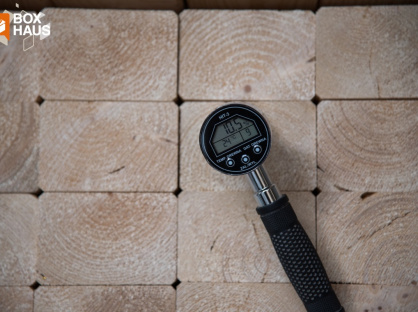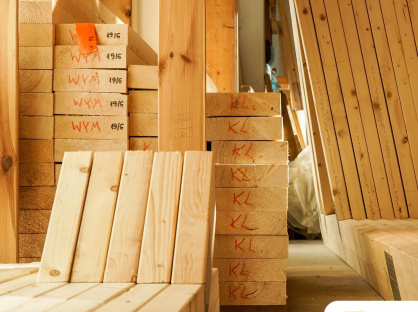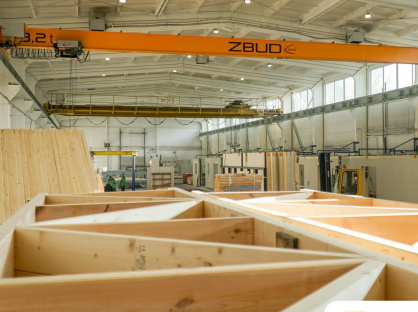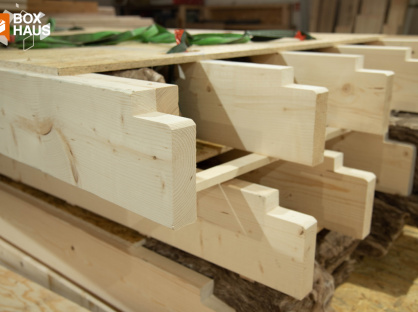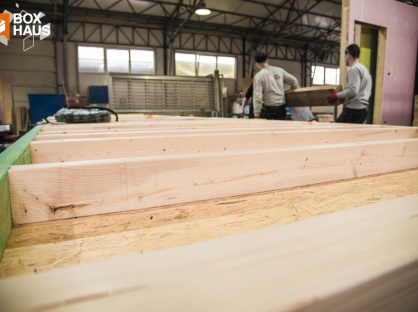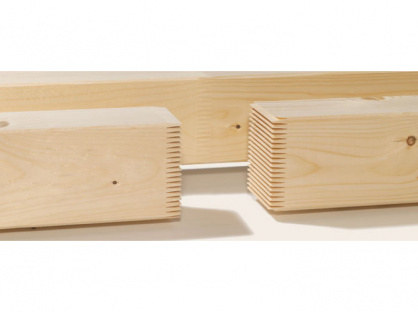
TIMBER - Simple as that
Two of the same building models can be made of different types of wood. One as well as the other will be timber houses. Which type is better, what uses do they have? What type of wood does BOX HAUS use?
The wood that BOX HAUS uses in prefabrication is certified KVH wood.
C24 timber and KVH timber are two types of treated timber that are commonly used in construction, but differ in several key aspects:
Classification:
C24 timber: This is a structural timber that is classified according to the European standard EN 338. The classification "C24" means that the timber meets certain strength requirements and is suitable for use in structures where the loads are higher. "C24" indicates a higher bending and loading strength compared to lower grades such as C16.
KVH timber (Konstruktionsvollholz): This is a specially treated structural timber produced in, among others, Germany, Austria, Sweden but also increasingly in Poland. KVH timber also meets stringent size and moisture content standards. KVH is often treated in such a way as to minimise the risk of cracking, twisting and other deformations. The wood is chamber-dried to a specific moisture content, which is ideal for precision structural applications.
Usage:
C24 timber: It is often used in roof structures, flooring and other load-bearing elements where loads may occur. Maximum lengths are 6m.
KVH timber: It is particularly popular in eco-friendly and energy-efficient construction, such as prefabricated houses and timber-frame buildings. It is also chosen where high precision and dimensional stability are required.
Processing and quality:
C24 timber: Can be naturally kiln-dried or chamber-dried, depending on the manufacturer and specific project requirements.
KVH timber: It is always chamber-dried to a moisture content of approximately 15 per cent, ensuring less tendency to deform after installation. KVH often undergoes additional quality control processes, making it more homogeneous compared to regular structural timber. KVH timber is 4-sided planed and has chamfered edges - increasing its dimensional stability. In the event of a fire, KVH wood slowly seals from the outside, forming a charred layer on the surface which further protects it from fire, so that structural stability is still maintained. KVH timber does not plasticise in the event of fire like steel, for example.
The KVH timber production process uses C24 strength timber joined by micro-joining. KVH wood was developed to achieve greater lengths than C24. By gluing shorter pieces together, the strength is greater than with standard C24. According to the standards - in the case of kiln-dried wood - no additional chemical impregnation is required. KVH wood can be impregnated when it will be continuously exposed to weather conditions.
In summary, the main differences between C24 and KVH wood relate mainly to quality standards, processing and use in construction. To use a major simplification: every KVH wood has the strength of C24 wood, but not every C24 wood is a KVH-rated wood.
Thanks to the use of KVH wood, BOX HAUS provides a 30-year guarantee on the structure and statics of the building.
